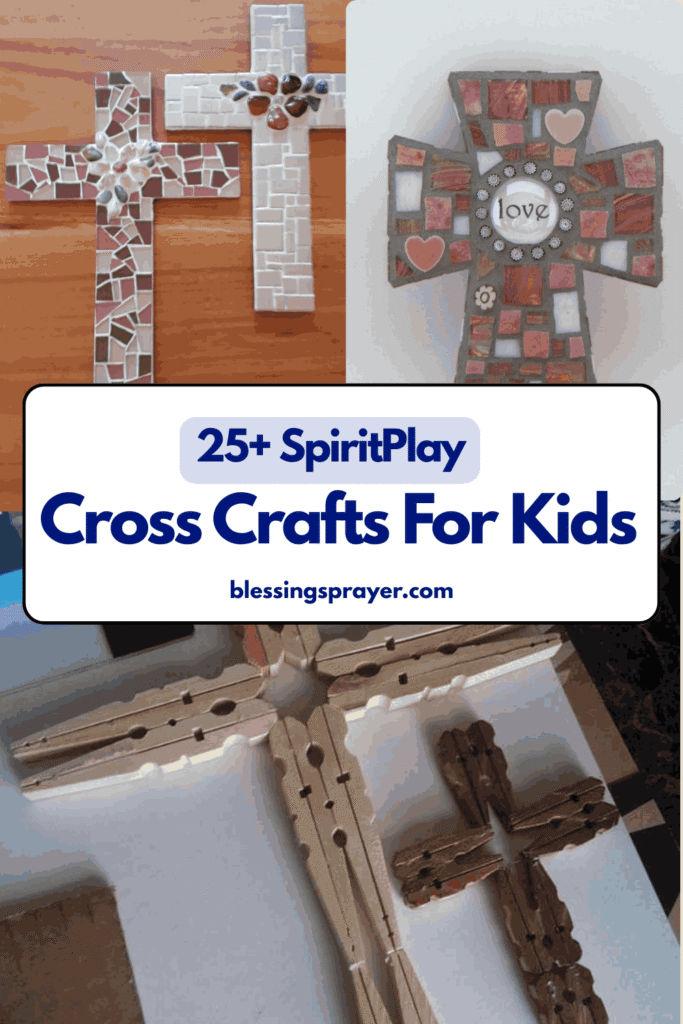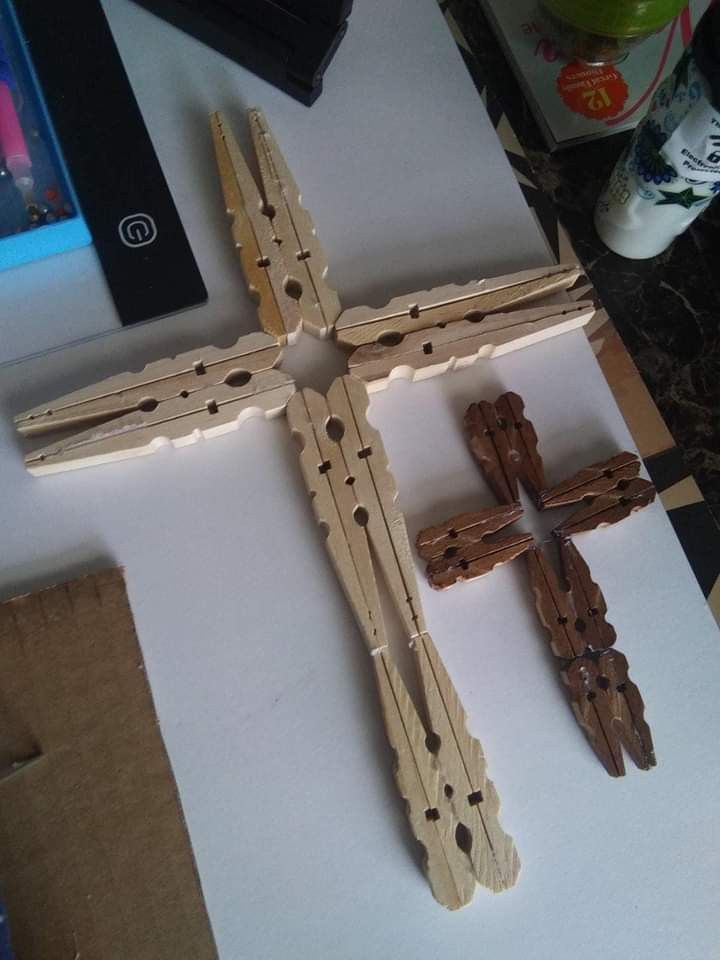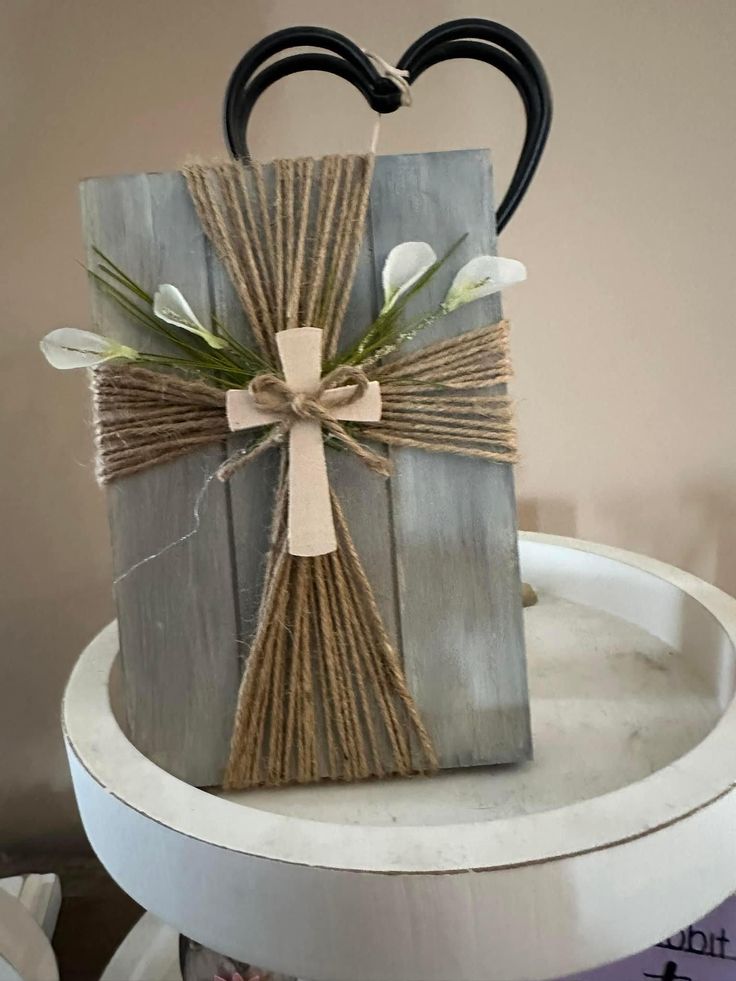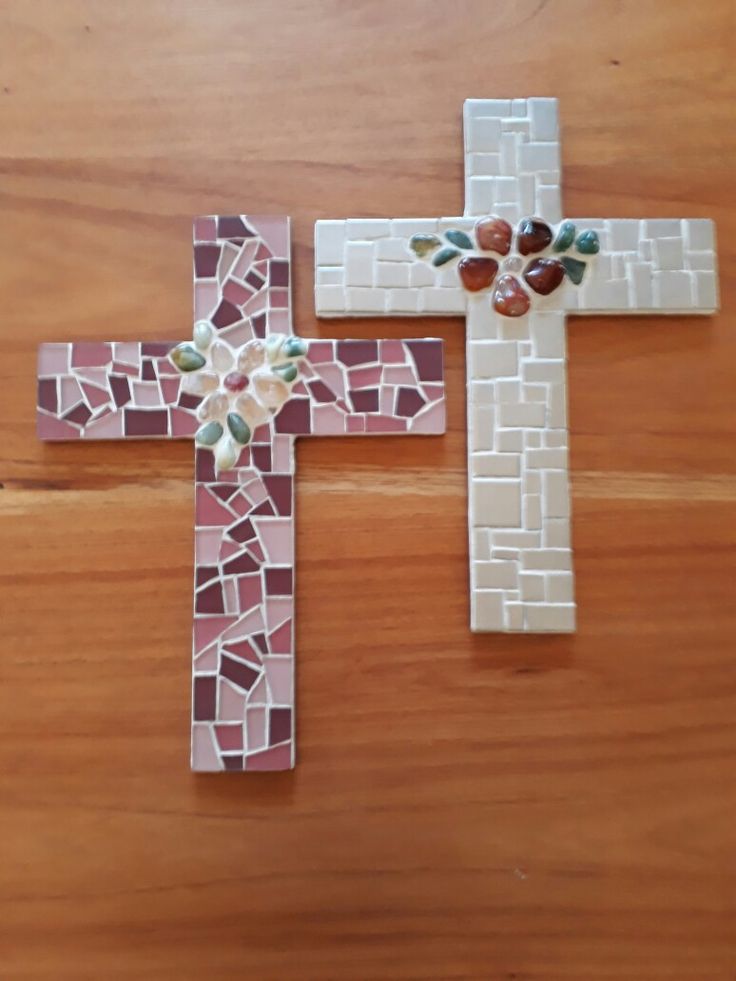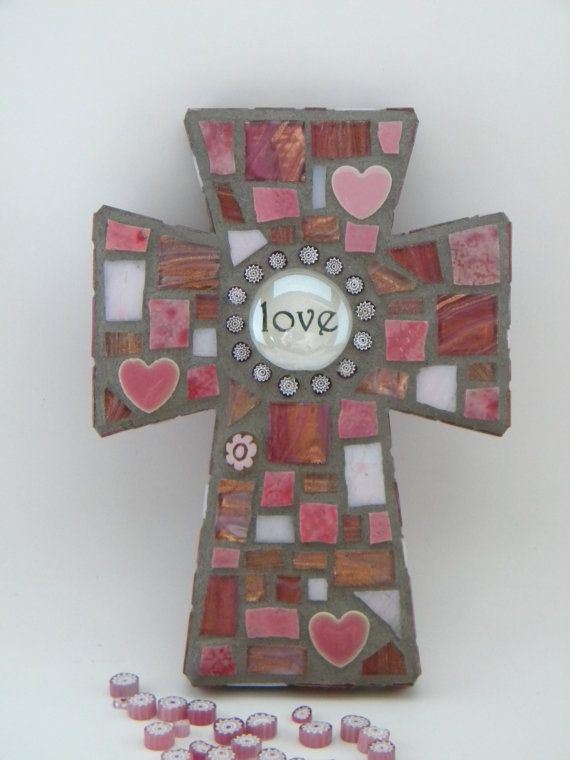You know, I still remember the first time we did a craft session with the kids at our Sunday school. We were trying to keep it simple—just paper, some glue, and a few markers—but the way those little hands focused on making crosses honestly blew me away. I could see them thinking about what the cross really means, and it made the whole room feel alive with faith and laughter.
It’s not always easy to come up with activities that are both meaningful and fun, especially with little ones who get distracted easily. But I’ve found that involving them in creating something that points to Christ helps them remember the story in a way nothing else can. In this article, I’ll share some creative, hands-on cross crafts that kids love, and that bring faith to life in their own tiny, bright ways.
Cross Crafts For Kids
Popsicle Stick Crosses
Source: Pinterest
I remember one Sunday when the kids were all eager to craft. We handed out popsicle sticks and some glue, and honestly, watching them balance the sticks into crosses was priceless. Some got crooked, some were perfectly straight—it didn’t matter. I’ve found that letting them decorate with markers, stickers, or glitter really sparks their creativity. To be fair, there was glitter everywhere, but seeing their proud little faces held more value than any mess. Those simple popsicle stick crosses became keepsakes, and even the parents loved seeing the tiny hands’ efforts. It’s simple, fun, and the kids love taking their creations home.
Paper Roll Crosses
One day, we used empty toilet paper rolls to make crosses. Honestly, it was surprisingly fun to see how creative the kids got. I’ve found that even everyday items can turn into meaningful crafts when you add a little imagination. To be fair, some rolls got squished, but it didn’t matter—they decorated them with paint, stickers, and glitter anyway. Each child’s cross looked unique and colorful, and they loved taking them home to show their families. It was a reminder that faith and creativity can go hand in hand, and even simple materials can help children connect with the story of the cross in a memorable way.
Button Crosses
I handed out buttons and cardboard cutouts shaped like crosses one afternoon. Honestly, the kids were fascinated by the colors, shapes, and textures. I’ve found that arranging buttons encourages fine motor skills and gives each child a chance to personalize their cross. To be fair, a few buttons rolled off the table, but it was worth the laughter and excitement. We glued the buttons down and added little ribbon accents. Each finished cross looked charmingly unique. It’s amazing how something as small as a button can help kids think about faith and create something tangible that carries meaning.
Yarn-Wrapped Crosses
Source: Pinterest
I gave kids wooden or cardboard crosses and colorful yarn to wrap around them. Honestly, the focus and patience on their faces was heartwarming. I’ve found that yarn crafts help kids concentrate and allow for endless creativity with color combinations. To be fair, a few yarn strands got tangled, but the kids giggled and kept going. They loved seeing their cross transform as the colors layered and overlapped. Each cross became bright, personal, and ready to hang in their room or classroom. It’s simple, hands-on, and lets children feel ownership of a faith-based project that they can proudly display.
Popsicle Stick Weaving Crosses
One day, we tried weaving paper strips between popsicle sticks to form crosses. Honestly, some of the kids were puzzled at first, but then their excitement grew. I’ve found that weaving crafts teach patience, creativity, and coordination. To be fair, it got tricky for the youngest ones, but with a little help, everyone finished their cross. We used colorful paper, glitter, and stickers to add extra charm. Each cross looked vibrant and unique. It’s a simple way to combine art and faith, and the kids loved seeing how something flat could turn into a beautiful woven cross they made themselves.
Sticker Mosaic Crosses
Source: Pinterest
I set out small stickers and cardboard crosses for a mosaic craft. Honestly, the kids’ concentration was incredible—they were so deliberate in placing each sticker. I’ve found that mosaic crafts allow kids to experiment with color and pattern while creating a meaningful symbol. To be fair, a few stickers ended up upside down or in the wrong place, but it added character. Each cross came out colorful, textured, and personal. The kids loved showing them off, and it made me realize how hands-on projects can make the symbol of the cross tangible and fun for children.
String Art Crosses
One afternoon, we gave the kids cardboard, nails, and colorful string to create crosses. Honestly, the way they carefully wrapped the string around the nails showed real focus. I’ve found that string art helps kids develop patience and fine motor skills, and they love seeing the design emerge. To be fair, some of the younger ones needed guidance, but they were thrilled with the results. Each cross looked vibrant and full of personality. Displaying them on the wall afterward made the classroom feel festive and faith-filled. The kids were proud to see their work admired by everyone, and the activity naturally sparked conversations about the meaning of the cross.
Beaded Pipe Cleaner Crosses
I once handed out pipe cleaners and colorful beads for the kids to make their own crosses. Honestly, watching them thread the beads was adorable—they’d sometimes pause to admire their patterns before continuing. I’ve found that this craft is great for hand-eye coordination, and kids love experimenting with colors. To be fair, a few beads rolled across the table, but it was worth it for the smiles. Each finished cross was unique, and the kids could bend them into fun shapes or hang them on their backpacks. It’s simple, portable, and meaningful—a small cross they can carry wherever they go.
Foam Sticker Crosses
Source: Pinterest
I gave the children foam sheets and stickers to make crosses one day, and honestly, the creativity was off the charts. I’ve found that foam crafts are perfect for younger kids—they stick easily, are colorful, and are lightweight. To be fair, some designs were a bit wobbly, but that made them charmingly unique. We decorated with foam shapes, glitter, and little gems, and the kids loved combining textures. When finished, they proudly showed their friends and even took their crosses home to hang on their bedroom doors. It’s simple, fun, and allows kids to express faith in a hands-on, memorable way.
Beaded Pipe Cleaner Crosses
One week, we bent pipe cleaners into cross shapes and threaded beads onto them. I’ve found kids love the tactile nature of twisting and stringing—it keeps little hands busy and engaged. Honestly, seeing their designs sparkle with different colors was heartwarming. To be fair, some beads slipped off, but that led to problem-solving and teamwork. These crosses could stand on tables or be hung on backpacks. Even simple materials become tools for children to connect with faith, creativity, and a sense of accomplishment.
Tissue Paper Collage Crosses
I gave each child a paper cross and a pile of torn tissue paper scraps. Honestly, watching them carefully glue tiny pieces together was mesmerizing. The colors blended into something surprisingly beautiful, and each cross had its own personality. To be fair, glue got everywhere, but that’s part of the mess and the fun. I’ve found that collage crafts let kids express themselves while subtly talking about how we all contribute to God’s bigger picture. At the end, we displayed them on the wall, creating a stunning, collaborative gallery of faith.
Nature Stick Crosses
During one craft session, we collected small sticks and twigs from outside and tied them into crosses with string. Honestly, the smell of fresh wood filled the room and added a rustic touch. To be fair, a few sticks broke, but kids learned patience and persistence. I’ve found that using nature connects them to God’s creation while making something meaningful with their own hands. We even added leaves or tiny pinecones, and the crosses became mini reminders of faith and the beauty of the world around us.
Nature Stick Crosses
During an outdoor activity, I collected twigs and small branches with the kids to create natural crosses. Honestly, it felt grounding to craft with pieces of God’s creation. I’ve found that using natural materials connects children to the world around them while making something sacred. To be fair, arranging the sticks took patience, but the end result was lovely. We tied them together with twine and added leaves or tiny flowers for color. Each cross was unique, and the kids were proud to hold a piece of nature transformed into a symbol of faith. It’s simple, earthy, and truly meaningful.
Clothespin Crosses
View this post on Instagram
I once brought a batch of wooden clothespins and let the kids clip them together into cross shapes. Honestly, seeing the variety of designs they came up with made me smile. I’ve found that clothespin crafts are easy, cheap, and allow a lot of creative freedom. To be fair, some pins slipped, but the kids just re-clipped and kept going. We painted and added decorations like tiny ribbons or glitter dots. Each cross felt personal and could stand on a table or be hung on a wall. It’s simple, tactile, and a fun way for kids to engage with faith hands-on.
Popsicle Stick Crosses
I remember one Sunday when the kids were all eager to craft. We handed out popsicle sticks and some glue, and honestly, watching them balance the sticks into crosses was priceless. Some got crooked, some were perfectly straight—it didn’t matter. I’ve found that letting them decorate with markers, stickers, or glitter really sparks their creativity. To be fair, there was glitter everywhere, but seeing their proud little faces held more value than any mess. Those simple popsicle stick crosses became keepsakes, and even the parents loved seeing the tiny hands’ efforts. It’s simple, fun, and the kids love taking their creations home.
Paper Plate Crosses
One day, I decided to give the kids paper plates and scissors. We cut out cross shapes and let them paint and decorate. Honestly, some of the designs were wilder than I expected, but that’s what made it beautiful. I’ve found that paper plate crosses are easy for small hands and really sturdy once painted. Adding ribbons or small stickers makes them extra special. To be fair, cutting can get tricky for the littlest ones, so some help is needed. In the end, the kids felt accomplished, and we hung the crosses around the classroom as a colorful reminder of faith.
Salt Dough Crosses
I once mixed up a batch of salt dough and handed it to the kids to create their own crosses. Honestly, the smell of baking dough mixed with laughter was unforgettable. We pressed in designs, little hearts, and even tiny fingerprints before baking. I’ve found that tactile crafts like this help kids really connect with what they’re making. To be fair, it gets a little messy, but watching them proudly hold their hardened dough crosses made it worthwhile. Each cross felt unique, and some kids even painted them afterward. These salt dough crosses became lasting reminders of their creativity and faith.
Watercolor Cross Painting
I set out watercolor paints and paper one afternoon and asked the kids to paint their favorite cross design. Honestly, the blend of colors and the concentration on their little faces made my heart full. I’ve found that watercolor is forgiving, so even if they go outside the lines, it still looks beautiful. To be fair, some colors ran together more than intended, but it added character. Watching them layer colors and see their crosses come to life was incredible. The best part? Each painting tells a story, and kids can proudly take their art home or display it on a wall for everyone to see.
Popsicle Stick Mosaic Crosses
View this post on Instagram
One session, we broke popsicle sticks into small pieces and let the kids glue them into cross shapes like a mosaic. Honestly, seeing their patience and focus was heartwarming. I’ve found that mosaics encourage creativity and attention to detail, even for younger children. To be fair, some pieces didn’t stick perfectly, but it gave the crosses a rustic charm. Each child’s mosaic turned out unique, and they loved explaining their color choices and designs. It’s a simple craft that teaches focus, creativity, and a deeper connection to the symbol of the cross in a way kids genuinely enjoy.
Paper Plate Crosses
One day, I decided to give the kids paper plates and scissors. We cut out cross shapes and let them paint and decorate. Honestly, some of the designs were wilder than I expected, but that’s what made it beautiful. I’ve found that paper plate crosses are easy for small hands and really sturdy once painted. Adding ribbons or small stickers makes them extra special. To be fair, cutting can get tricky for the littlest ones, so some help is needed. In the end, the kids felt accomplished, and we hung the crosses around the classroom as a colorful reminder of faith.
Salt Dough Crosses
I once mixed up a batch of salt dough and handed it to the kids to create their own crosses. Honestly, the smell of baking dough mixed with laughter was unforgettable. We pressed in designs, little hearts, and even tiny fingerprints before baking. I’ve found that tactile crafts like this help kids really connect with what they’re making. To be fair, it gets a little messy, but watching them proudly hold their hardened dough crosses made it worthwhile. Each cross felt unique, and some kids even painted them afterward. These salt dough crosses became lasting reminders of their creativity and faith.
Watercolor Cross Painting
I set out watercolor paints and paper one afternoon and asked the kids to paint their favorite cross design. Honestly, the blend of colors and the concentration on their little faces made my heart full. I’ve found that watercolor is forgiving, so even if they go outside the lines, it still looks beautiful. To be fair, some colors ran together more than intended, but it added character. Watching them layer colors and see their crosses come to life was incredible. The best part? Each painting tells a story, and kids can proudly take their art home or display it on a wall for everyone to see.
Popsicle Stick Mosaic Crosses
One session, we broke popsicle sticks into small pieces and let the kids glue them into cross shapes like a mosaic. Honestly, seeing their patience and focus was heartwarming. I’ve found that mosaics encourage creativity and attention to detail, even for younger children. To be fair, some pieces didn’t stick perfectly, but it gave the crosses a rustic charm. Each child’s mosaic turned out unique, and they loved explaining their color choices and designs. It’s a simple craft that teaches focus, creativity, and a deeper connection to the symbol of the cross in a way kids genuinely enjoy.
FAQ
What materials are best for cross crafts for kids?
For children, simple and safe materials work best. Cardboard, popsicle sticks, pipe cleaners, foam sheets, and yarn are all excellent choices. Honestly, using materials kids are familiar with makes the process smoother and more enjoyable. You can also incorporate items from nature like twigs, leaves, or small stones for a creative twist. The key is to keep the materials non-toxic, easy to manipulate, and suited to the child’s age. Allowing kids to choose colors and textures encourages creativity and gives them a sense of ownership over their craft.
How can I make cross crafts age-appropriate?
You can tailor crafts to each child’s abilities. For younger kids, simple activities like foam sticker crosses or yarn-wrapped crosses work well. Older children may enjoy string art or bead projects. To be fair, some kids may need guidance, but giving them space to experiment helps them build confidence. The complexity should match their fine motor skills while still being engaging and fun.
How do I make the crafts meaningful?
Incorporate storytelling or Scripture as part of the activity. For instance, while making a cross, you can share the story of Jesus’ love and sacrifice. Honestly, connecting the craft to a spiritual lesson helps children understand the symbolism. You can encourage them to personalize the cross with colors or decorations that reflect what faith means to them. This way, the craft becomes more than an art project—it’s a tangible reminder of God’s love.
Can these crafts be displayed at home or church?
Absolutely. Many crafts like popsicle stick crosses, string art, or button mosaics are sturdy enough to display. I’ve found that hanging them on walls, placing them on shelves, or adding them to prayer corners makes the crafts even more special. It also reinforces the child’s sense of accomplishment and helps integrate faith into daily life.
How can I keep the crafting area organized?
Set up separate containers for beads, buttons, stickers, and other small items. Honestly, a little organization goes a long way in preventing frustration. Use newspaper or a plastic mat to protect surfaces. Having all materials accessible but neatly arranged encourages children to focus on creating rather than searching for supplies.

I’m father joaquin perez, we are a catholic church with all the sacraments where everybody is welcome. we celebrate catholic mass every Sunday at 12:30pm at saint stephen episcopal church at 2750 McFarlane road, Miami, Florida

